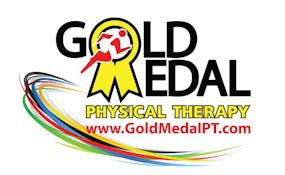Gold Medal Physical Therapy Practice Shares Essential Safety Tips as
Youth Sports Season Begins
Bel Air August 2025
Back-to-School Athletics Prompt Focus on Injury Prevention for Young Athletes
As students across the region lace up their cleats and return to fall sports, local physical therapy
experts are emphasizing the importance of injury prevention for young athletes. Participation in
youth sports continues to rise, and understanding how to keep children safe while maintaining
their competitive edge has never been more important.
Pre-Season Preparation Makes the Difference
Conditioning routines should start 4-6 weeks before official team practices start. This prep
period allows young bodies to gradually adapt to increased physical demands, reducing the risk
of overuse injuries that commonly sideline student-athletes.
Conditioning programs should incorporate basic cardiovascular fitness, strength training
appropriate for the athlete’s age, and sport-specific skill development. The emphasis should
always be on gradual progression rather than immediate intensity.
Start with the basics like jogging, jumping jacks, and bodyweight squats.
Add sport-specific drills gradually: A soccer player might begin with light ball work, while a runner starts with short, easy distances.
The key word here is “gradually” – adding too much too soon leads to injuries.
The Power of a Proper Warm-Up
Never skip the warm-up! A good warm-up is like starting your car on a cold morning. It gets
everything moving smoothly.
Spend 10 – 15 minutes doing light cardio and dynamic stretches: Think leg swings, arm circles, and gentle lunges. Save static stretching (where you hold the stretch) for after practice.

The Recovery Revolution
Perhaps the most overlooked aspect of youth sports safety is adequate recovery time. Young
athletes require a minimum of one complete rest day per week, along with 8-9 hours of quality
sleep nightly.
Warning signs that a young athlete may be overdoing their training include persistent fatigue,
frequent minor illnesses, declining academic performance, and ongoing muscle soreness.
Parents and coaches who recognize these red flags can prevent minor issues from becoming
season-ending injuries.
Nutrition and Hydration: The Foundation of Performance
Proper nutrition serves as both a performance enhancer and injury prevention strategy. Young
athletes need consistent meals featuring balanced portions of fruits, vegetables, lean proteins,
and complex carbohydrates. Adequate hydration – primarily through water rather than
commercial sports drinks – supports both performance and recovery
Creating a Culture of Safety
Modern sports medicine emphasizes teaching young athletes to listen to their bodies and speak
up about discomfort. The outdated “tough it out” mentality has been replaced with evidence based approaches that prioritize long-term athletic development over short-term gains.
Pain that persists beyond normal post-exercise soreness, affects daily activities, or impacts
performance quality should always be evaluated by qualified sports medicine professionals including Physical Therapists. Early intervention often prevents minor issues from developing into serious injuries requiring extended time away from sports.
Building Lifelong Healthy Habits
The ultimate goal extends beyond preventing immediate injuries to fostering lifelong
appreciation for physical activity and wellness. When young athletes learn proper training
principles, recovery strategies, and body awareness early in their careers, they carry these
valuable lessons into adulthood.

For more information about youth sports injury prevention or to schedule a consultation, contact
Gold Medal Physical Therapy at 410-638-5525 or 410-529-0989
